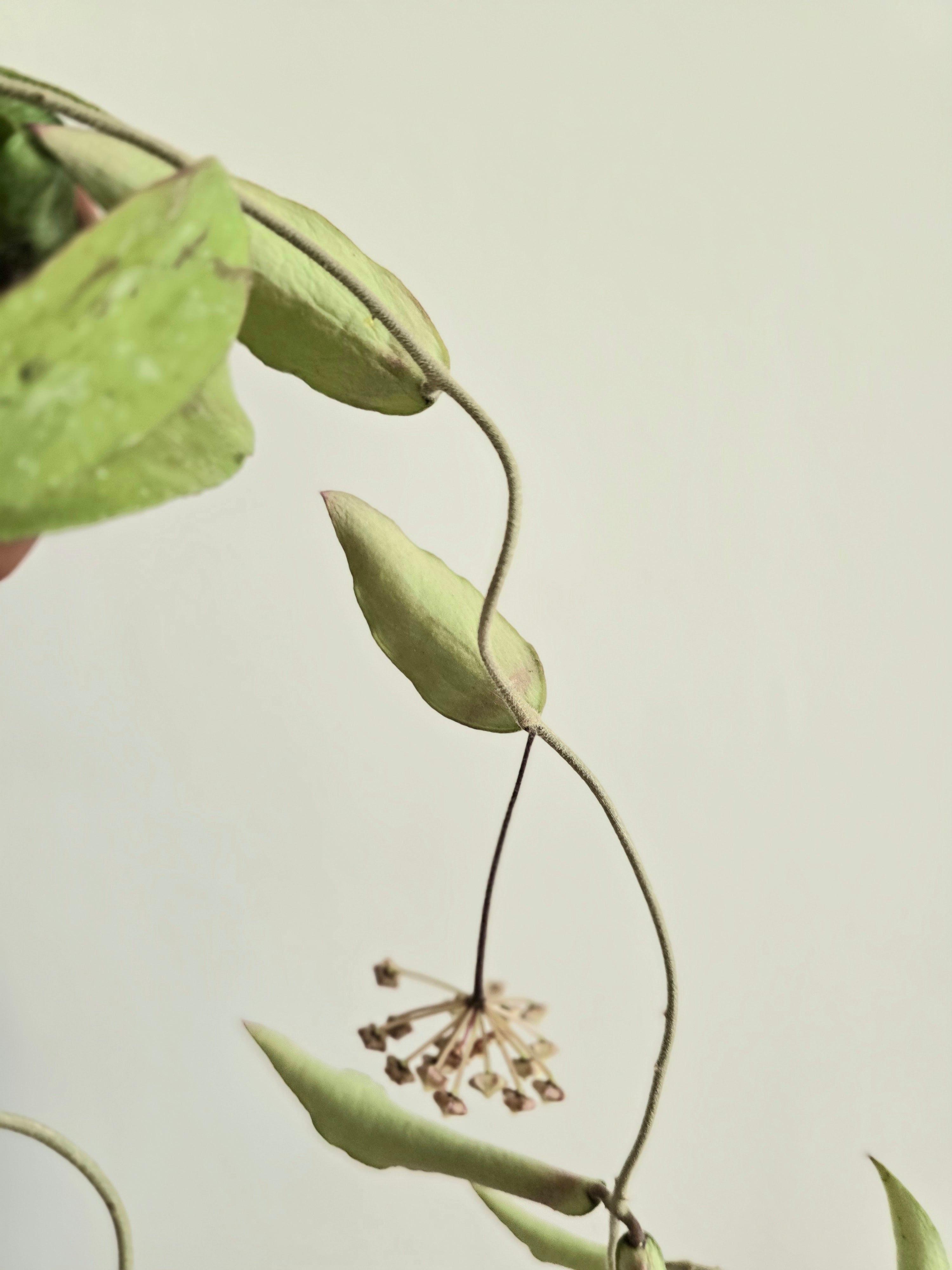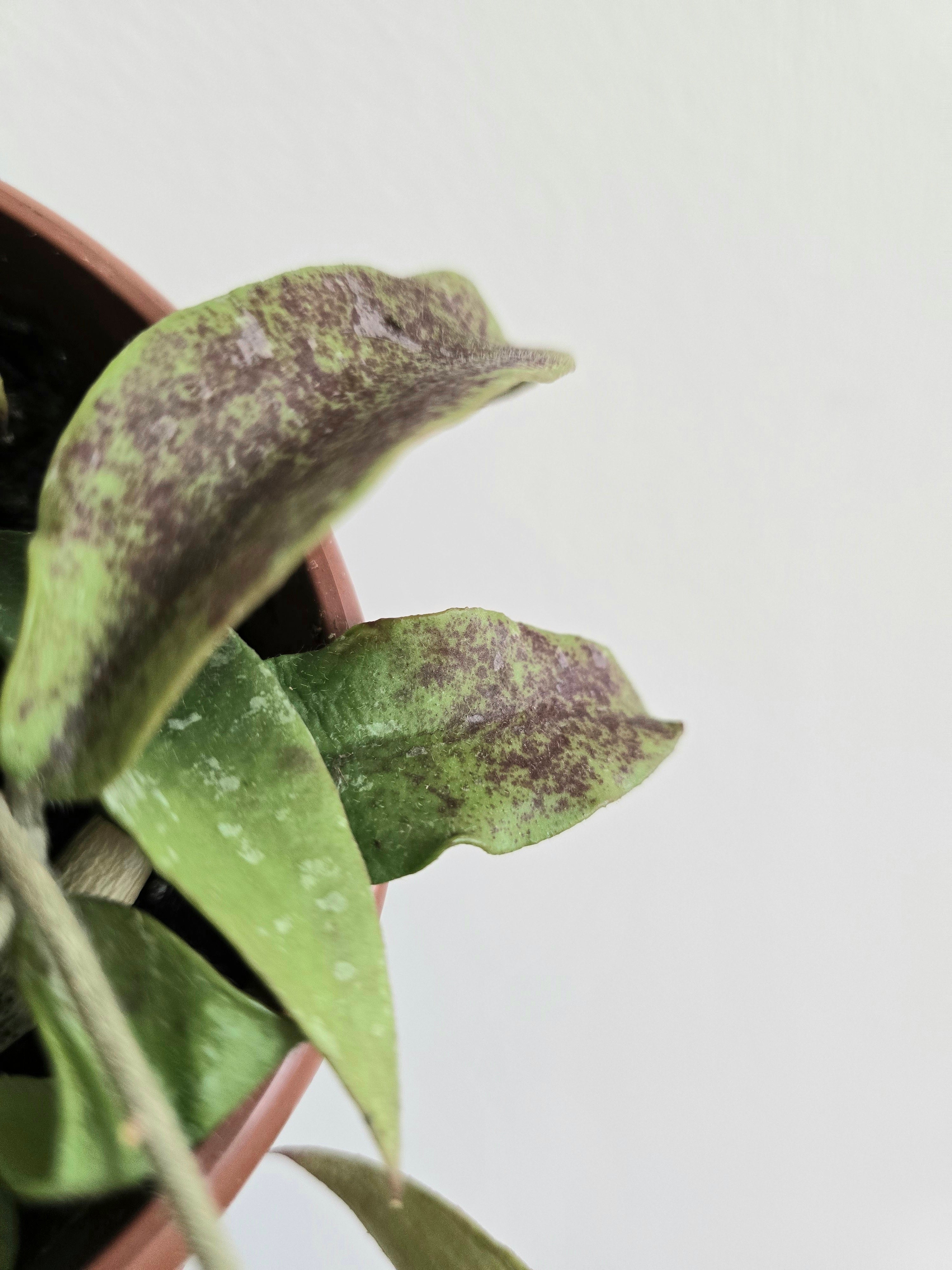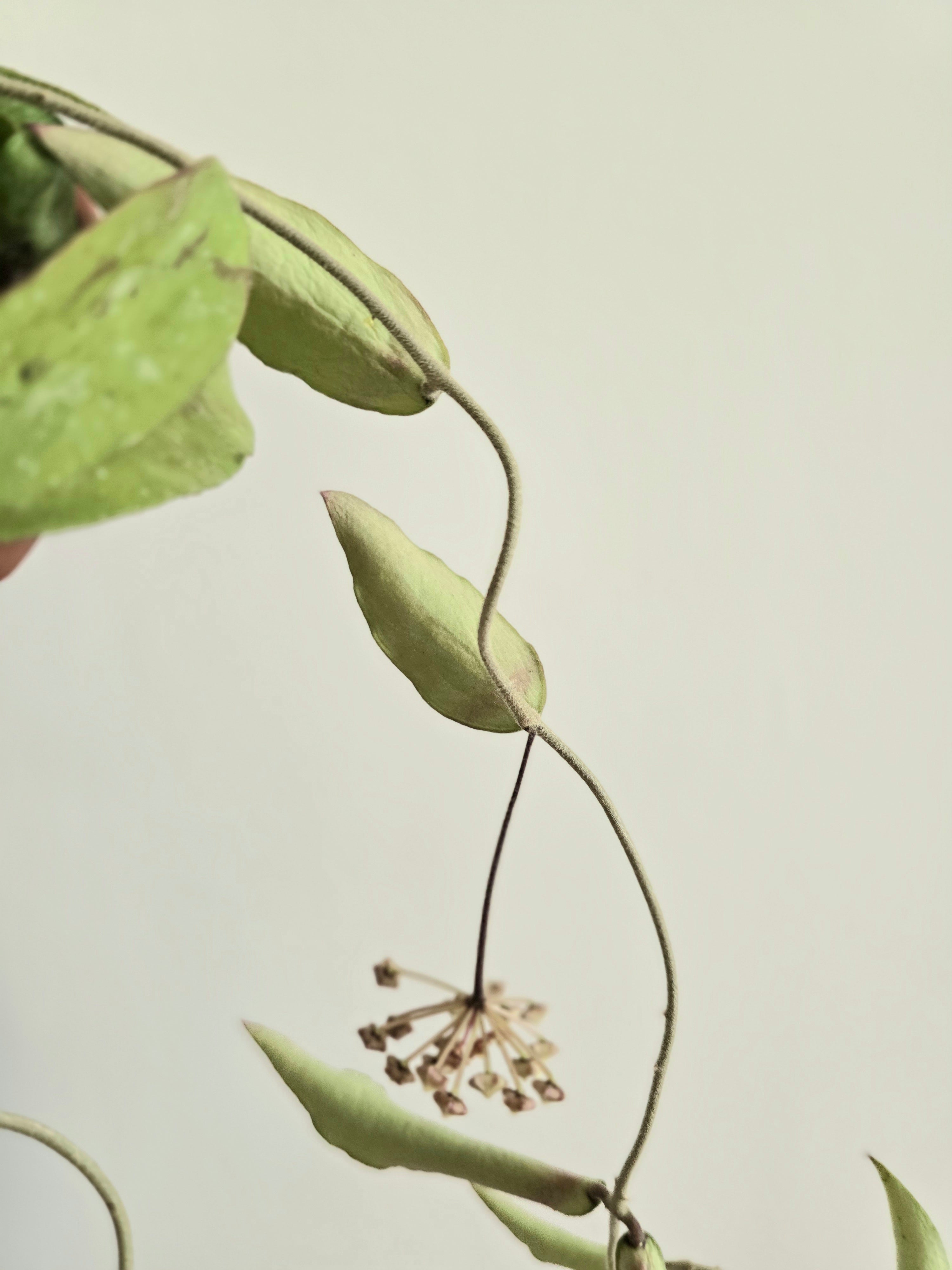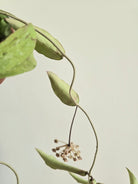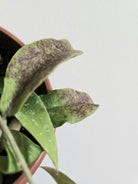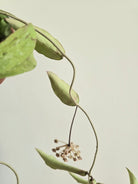1. Light:
-
Bright, Indirect Light: This plant thrives in bright but indirect sunlight. Avoid direct sunlight as it can scorch the leaves. A few hours of morning sun or filtered light is ideal.
-
Low Light Tolerance: It can also tolerate low light, but it may grow more slowly and bloom less frequently.
2. Watering:
-
Allow the Soil to Dry: Hoya phuwuaensis, like most Hoyas, is sensitive to root rot. Water the plant when the top 1-2 inches of soil feels dry.
-
Water Sparingly in Winter: Reduce watering during the colder months when the plant is not actively growing.
-
Ensure Good Drainage: Make sure the pot has drainage holes to prevent water from sitting at the bottom, as this can lead to root rot.
3. Temperature:
-
Warm Temperatures: Keep your Hoya in a warm environment, ideally between 60°F and 85°F (16°C to 29°C).
4. Humidity:
-
Moderate to High Humidity: While Hoya phuwuaensis is relatively tolerant of average humidity, it will flourish with higher humidity levels (around 50-70%).
-
Optional: Use a Humidifier: If you live in a dry area, consider using a humidifier or placing the plant on a humidity tray.
5. Soil:
-
Well-Draining Mix: A light, well-draining potting mix is essential. A cactus/succulent mix or a mixture of regular potting soil, perlite, and orchid bark is ideal.
-
Avoid Heavy Soils: Heavy, compacted soils can hold too much moisture and cause root rot.
6. Fertilizing:
-
Feeding: During the growing season (spring and summer), feed with a balanced liquid fertilizer once a month.
7. Pruning:
-
Minimal Pruning: This plant doesn't require frequent pruning. You can trim any long or leggy stems to encourage bushier growth, but it's mostly self-maintaining.
-
Deadheading Blooms: After the plant blooms, you can remove spent flowers to keep it tidy.
8. Repotting:
-
Every 2-3 Years: Hoya phuwuaensis doesn't need frequent repotting. Only repot when it becomes root-bound or if the soil needs refreshing.
-
Slightly Larger Pot: When repotting, choose a pot just slightly larger than the current one.
9. Common Issues:
-
Yellowing Leaves: Overwatering or poor drainage could cause this. Ensure the soil dries out between waterings.
-
Pests: Check for common pests like mealybugs, aphids, or spider mites. Treat with insecticidal soap or neem oil if needed.

